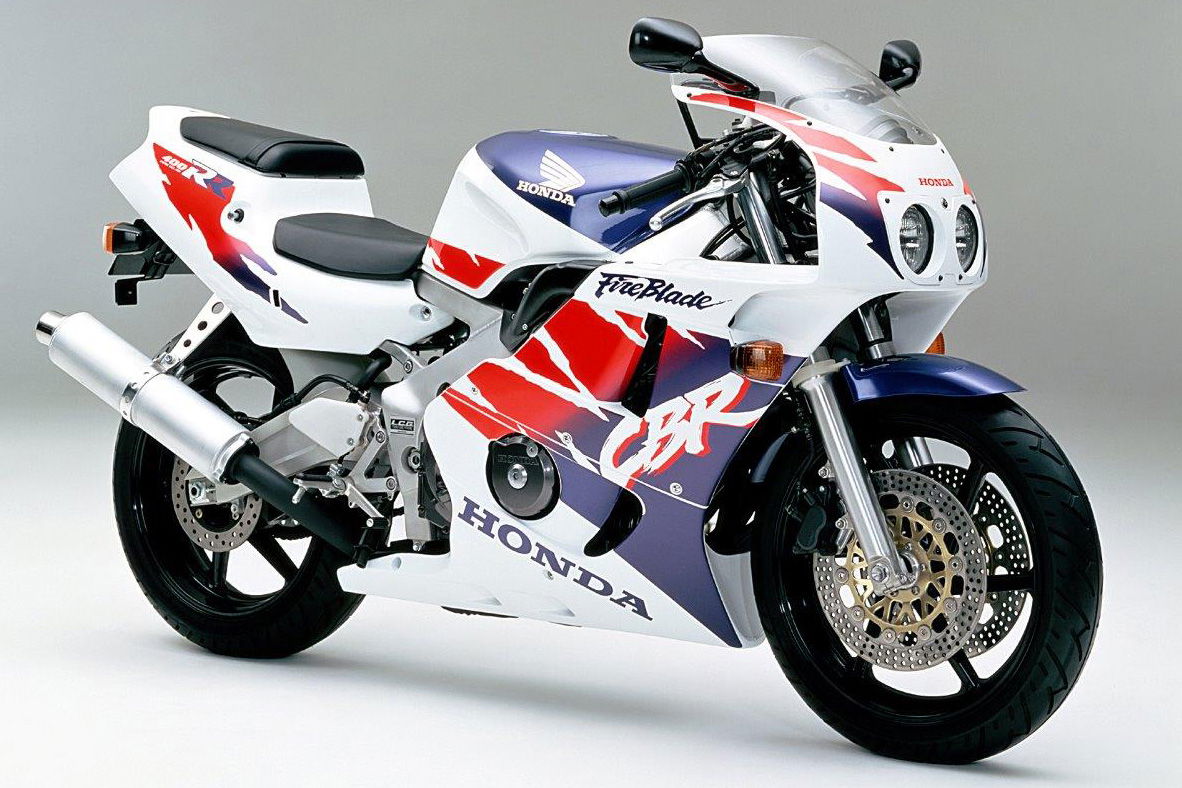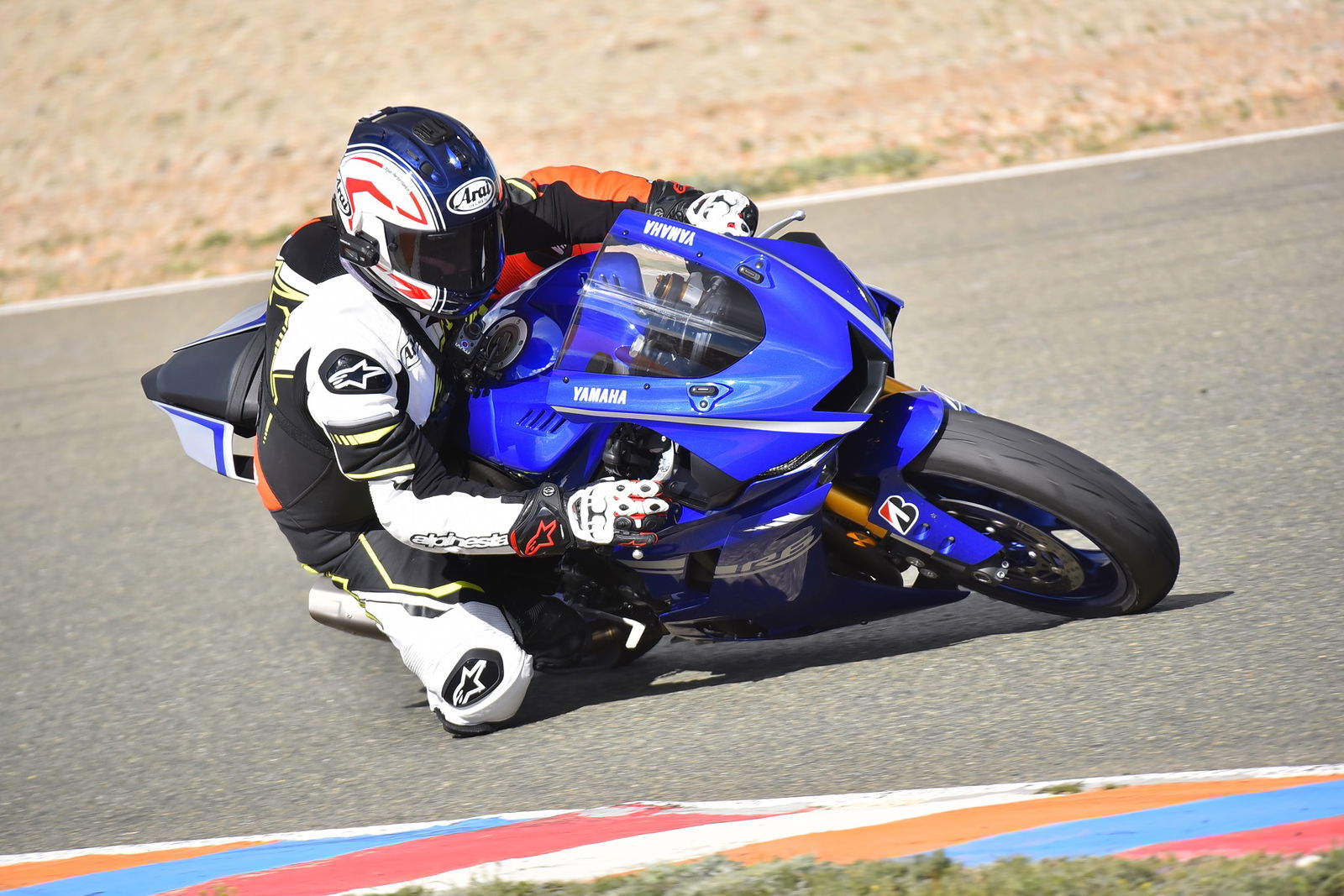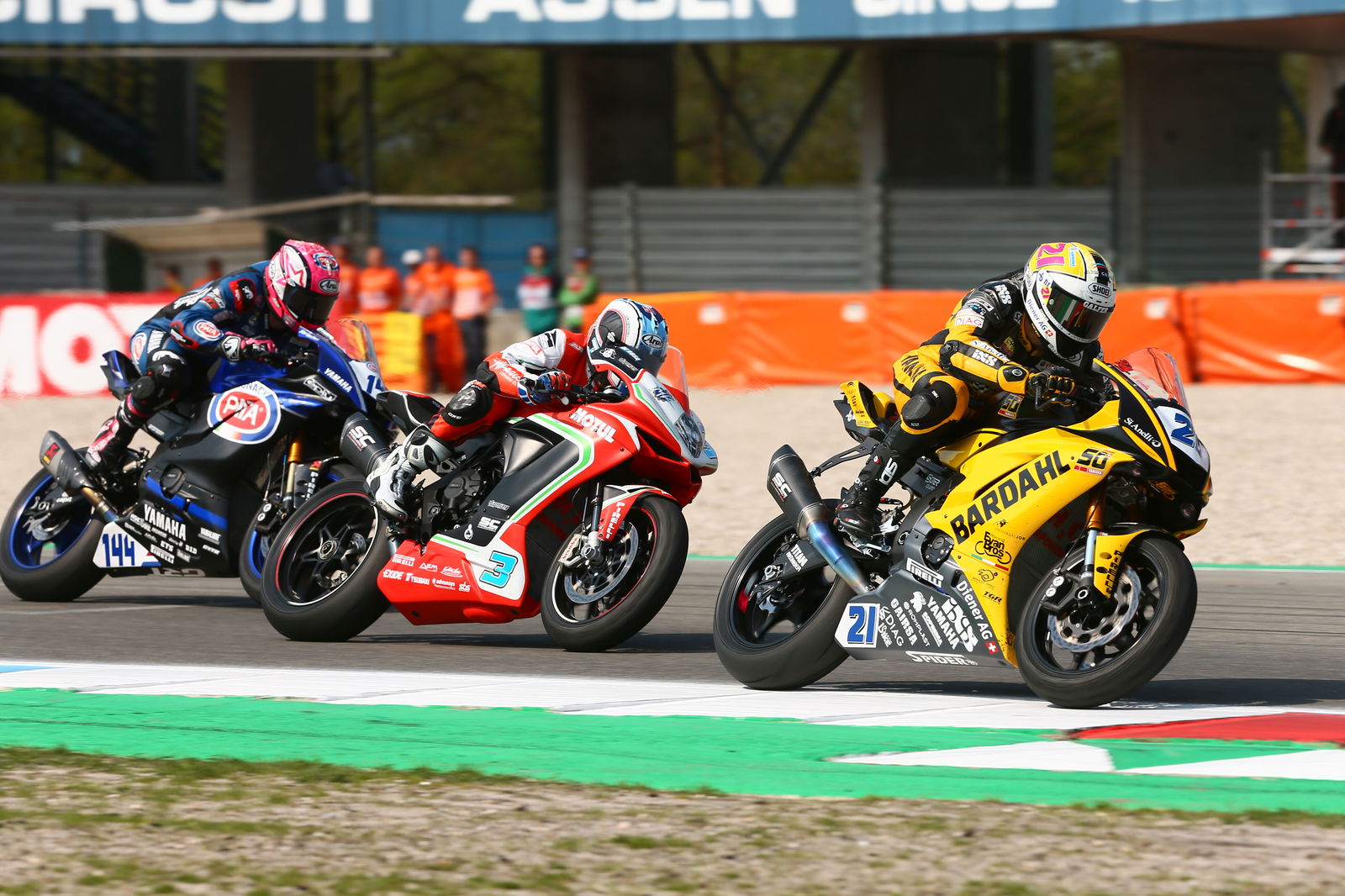Special report: Are 600cc sportsbikes dead and buried?
Plummeting sales, high prices and a lack of development. Can anything save the supersports 600?

YOU DON’T have to reach far back into the history books to see that 600cc supersports bikes once made up the hottest market segment of all. Supplies could barely keep up with demand and manufacturers were engaged in an all-out war to create the most high-tech and desirable 600cc machine on the market.
The battle became so intense that a little over a decade ago Yamaha was even fitting its R6 with misreading rev-counters, giving the impression its bike screamed higher than any of the competition. The 2006 model’s 17,500rpm red line seemed incredible, and it turned out to be exactly that; not credible. The real rev limit was around the 16,000rpm mark, with the counter over-reading and giving the impression that the bike’s technology must have been a step or two ahead of its apparently lower-revving rivals.
That might have been stepping over the line, but 600s were often early adopters of new technology. When Yamaha introduced the motorcycle world to fly-by-wire throttles, the R6 was the first bike to get them. When Honda wanted to show us that ABS would work on a sports bike, it was the CBR600RR that gained the kit before anything else.
But a few years on it’s hard to imagine getting anything very new with a 600cc supersports machine. Aside from the occasional tuck and tweak, every mainstream contender on the market is based on an old design, lacking the modern technology that’s increasingly becoming available even on cheaper, lower-performance bikes. If you want cornering ABS, IMU-assisted traction control or a host of other new tech that’s proliferated in other parts of the market, don’t go looking towards the 600cc supersport class to satisfy your desires.
Chicken or egg?
For a graphic illustration of the way the bottom has fallen out of the market for supersports bikes, you need only look at the UK sales figures in the class.
For years British riders had a love affair with 600s. They fulfilled our national tendency to lean towards sports bikes over other machines, but came with a lower price and a dash of added practicality when compared to full-on superbike-class offerings. But over the last decade or so, we’ve simply stopped buying them.
Back in 2006, at the very height of the battle for 600cc supremacy, the Honda CBR600RR, Yamaha R6, Suzuki GSX-R600, Kawasaki ZX-6R and then-new Triumph Daytona 675 accounted for some 8105 sales in the UK alone.
In 2017, the same models – plus the newer MV Agusta F3 675 – could muster only 716 UK registrations. That’s a 91% drop, and the picture here is widely reflected in other markets, too.
With numbers like that it’s no surprise that companies haven’t been rushing to pour their hard-earned R&D funds into their supersports machines over the last few years. The Yamaha R6 was visually revamped (again) for 2017 but the last time it could really claim to be ‘all-new’ was back in 2006. Suzuki’s GSX-R600 hasn’t really been touched since 2011 and its last complete overhaul was more than a decade ago.
Similarly the Kawasaki ZX-6R was last give a more than skin-deep revamp back in 2009. Honda has dropped the CBR600RR in Europe altogether, having not given it any big mechanical changes since 2007, and similarly the Triumph Daytona 675 has been laid to rest. You can still buy an MV Agusta F3 675 but just eight were registered in the UK last year. Unsurprisingly, everyone who’s not limited by racing regulations buys the 800cc version, which is really in a different class altogether.

There’s a circular argument to be had as to whether the falling fortunes of the class is the result of buyers losing interest or manufacturers failing to develop their bikes. Have we stopped buying them because there’s nothing new on the market, or is there nothing new being developed because there’s no interest from customers?
The figures show that sales started to decline a little even before the financial crisis hit in 2008/9, but that definitely had an impact. In fact, it was a triple-whammy for the Japanese firms that are the backbone of the class. Cash-strapped customers couldn’t afford the bikes, falling sales meant that R&D expenditure needed to be cut and – the icing on the cake – the Japanese Yen didn’t drop in value like the currencies of their main export markets, which carved an even deeper furrow into their margins.
A deeper issue
But even a dozen years ago, when we were at peak-supersports in terms of sales and the bikes themselves were still at the bleeding edge of technology, the writing was on the wall. While 600s were selling strongly, their profit margins were wafer thin and shrinking with every piece of new technology they adopted.
In fact, 600s weren’t the first machines to suffer this problem. The same fate befell the jewel-like 250cc and 400cc four-cylinder machines that were popular, particularly in Japan, in the 80s and 90s. The simple fact is that a four-cylinder sports bike, whether it’s a 250, a 400, a 600 or a 1000cc machine, has around the same number of components. And when there’s fierce competition between rival manufacturers, the battle for supremacy means there’s diminishing scope to use cheap parts or materials to cut back on costs.

The same applies to R&D expenditure; it’s just as pricey to develop a small sports bike as a large one.
But when it comes to selling them, there’s no way to put a 1000cc superbike price tag on a 600cc supersports machine. We might say that we’d like to see cornering ABS, EMU-operated stability control and all the other gizmos associated with the latest crop of superbikes applied to an all-new 600cc machine, but while there’s no question such a bike would be a stunner, people would still throw their hands up in horror if they were asked to spend £15,000 on buying one.
In the past, lower performance requirements, laxer emissions rules and less technology meant costs were lower and, combined with massive numbers of sales, the result was that the 600cc supersport bike still made good financial sense, even if the margins were slim. Today it’s much harder to make the numbers add up.
Emissions omissions
Which brings us on to yet another icy blast in the perfect storm that’s been building around the supersports market; emissions legislation.
Euro4 rules, which came into force on 1 January 2017, have been another boot in the groin for a class that was already punch-drunk from problems elsewhere. In fact, of all the bikes in the 600cc class, just two currently meet Euro4. One is Yamaha’s R6 – which lost power and gained weight in its 2017 update as a result of hitting the targets. The other is the MV Agusta F3 675, which has an advantage in being a 675cc triple rather than a 600cc four-cylinder.
Every other 600cc-class supersports bike is either dead or set to be dropped by the end of this year. Manufacturers were given a two-year period of grace to sell-off their old, non-Euro4 bikes, but that ends on December 31 2018.
The problem is that supersports 600s are designed from the ground up to make as much power as they can from their relatively small engines. Despite being intended as road bikes, they’re made specifically to meet World Supersports racing regulations, and those racing rules are at odds with the emissions demands of Euro4.
In simple terms, making lots of power from a small engine, without resorting to turbocharging or supercharging, means one thing; revs. Lots of them.

While Yamaha’s R6 might never have hit its fictional 17,500rpm red line back in 2006, today’s bikes aren’t that far from it.
But to allow an engine to breathe efficiently at that speed requires lots and lots of valve overlap. If you’re familiar with the four stroke basics – suck, squeeze, bang, blow – you’ll know that in the last of them, the exhaust stroke (‘blow’) the exhaust valves need to be open. Similarly you’ll know that for the intake stroke (‘suck’) that follows it, the inlet valves need to be open. But when an engine is revving high, it’s not enough to simply open the intake valves after the exhaust valves closed; there needs to be a brief crossover period when both the intake and exhaust valves to keep the gasses flowing efficiently through the cylinder. That period is valve overlap.
Overlap is fine at high revs, indeed it’s vital, but when the engine is running slowly then excessive overlap means unburnt fuel can escape into the exhaust with disastrous impact on the engine’s emissions. Reduce the overlap enough to pass emissions testing and you’ll strangle top-end power. Increase it to make the engine run well at speed and you risk failing the tests.
Sure, there are solutions. Variable valve timing was developed specifically to overcome this problem, and is already being applied to Suzuki’s GSX-R1000 as well as the Ducati Multistrada and Kawasaki’s GTR1400. But it’s yet another expensive technology, and 600 supersports customers – what few there are left – aren’t going to swallow another big price hike.
So what’s next?
For lovers of fast, 600cc, four-cylinder supersports bikes, it’s a grim picture. The emissions issue has already killed the CBR600RR and Triumph Daytona 675. Come the end of this year, Suzuki’s GSX-R600 and Kawasaki’s ZX-6R – both not Euro4-legal but still on-sale under the ‘end of series’ rules that allow them two more years to sell-off old Euro3-spec machines – will need to be revamped or dropped from sale. We hear that Suzuki plans a tweak to squeeze some more life from the GSX-R600, shoehorning it through Euro4 with as few modifications as possible. Kawasaki’s ZX-6R plans remain a mystery.
But there’s a possible light at the end of the tunnel, and it comes from the enormous bike market in Asia.
Although dominated by small-capacity bikes, many of the huge Southeast Asian motorcycle markets, like that of Indonesia, have a strong bias towards sports bikes. And with fast-rising affluence, larger-capacity bikes are set to become increasingly popular in that part of the world.
Bear in mind that 5.88 million bikes were sold in Indonesia alone last year, it’s easy to see that if even a tiny percentage of the nation’s riders turned to supersports 600s, the category could be saved.
WorldSBK, operated of the World Supersports championship that largely defines these machines, clearly has a big stake in their future. Executive Director Daniel Carrera told Visordown at last weekend’s Imola race: “Last year they [the manufacturers] were having the strategy to stop 600. Why? Because of the European market. They were thinking that they were not in the position to continue going because of the customers, who were losing the will to buy 600s. But with the conversations we had last month with them the strategy could be changed because they think it could come faster that the customers in Asia start to want this machinery.
“So now we are waiting a little, because until 2020 we have time because we have 600s homologated by the FIM, so we can run. So we need to see until the end of the year if they change their strategy and they would like to continue producing those models in the future. This will give stability to the category.
“If not we have other alternatives. We want to see if we can find a weight-power ratio that other models in the market can enter and then try to find technical regulations for a new category in the middle class.”

The alternatives
Those alternatives, which could eventually form a replacement for supersports machines both in racing and on the road, must surely include considering cheaper-to-make two-cylinder models or lower-strung fours with less expensive engine tech.
Bikes like the Yamaha MT-07, Suzuki SV650, Honda CBR650F and CB650F and Kawasaki’s Ninja 650 and Z650 all show that there’s still massive demand for middleweight machines with a sporty edge, even if they’re not the out-and-out track tools like the current (last?) generation of four-cylinder 600cc supersports bikes. With the application of a power-to-weight parity system, as used in the new World SSP300 class, rather than a simple capacity limit, those bikes and their descendants could well become the successors to the current generation of 600s, both on the track and on the road.

.jpg?width=1600)